The content of the article
Probably, there will not be such a person who as a child did not hold a snail in his palm, humming: "Show me the horns, I will give you grains and crumbs for this ...". Then it never occurred to anyone that this pretty creature could cause significant damage to garden and berry crops. A large population of grape snails can almost completely destroy the leaves in the vineyard or strawberry garden. Slugs (gastropods with reduced shell) eat white cabbage, lettuce, cucumbers and many other garden plants.
Where do snails and slugs appear on the beds?
These mollusks are common representatives of our fauna. They live in forests, meadows, gardens and vegetable gardens. In favorable conditions, in the presence of sufficient moisture and suitable types of vegetation for feeding, the populations of snails and slugs increase greatly. Shellfish are active during the warm season - from spring to autumn cold. Some species (in particular, grape snail) can mate twice a season. With the onset of autumn cooling, snails and slugs burrow into the ground and fall into hibernation - suspended animation.
Active crop pests include large and small grape snails and several slug species: Deroceras reticulatum, D. agreste, D. laeve, Parmacella iberia and Limax maximus. The last of these varieties settles not only in the beds, but also in the cellars and cellars, where he spends the winter, eating supplies: potato tubers, root crops of carrots and beets.
Why are snails and slugs dangerous?
Land gastropod mollusks often become carriers of parasitic worms. In particular, snails are intermediate hosts of tape helminths of trematodes, causing dangerous diseases in humans and animals. The body of some types of slugs is covered with toxic secretions, which are irritating to human skin.
These mollusks pose the greatest danger to crops. They damage not only young shoots and leaves of plants, but also fruits. So, slugs gnaw potato tubers, strawberries, cucumbers. The favorite food of land snails and slugs is cabbage and lettuce leaves. In conditions of high humidity (during such periods, snails and slugs are especially active) they can eat plants almost to the base. Crawling from garden to garden, mollusks spread viral and fungal diseases of garden crops.
How to get rid of slugs and snails
In the arsenal of combating harmful mollusks there is a large selection of means - chemical, mechanical and biological. When choosing the appropriate method, one must proceed from the size of the plot, planting areas of crops, the specific climate.
Chemicals
Most slug and snail preparations found on garden shelves contain metaldehyde. This substance damages the cells of the digestive tract, which leads to the death of animals. The drug is especially effective against young individuals. It is recommended for use in dry weather. During rain, the effect of metaldehyde is weakened. When using it, it should be remembered that it is toxic not only to mollusks, but also to humans and warm-blooded animals. If there are cats, dogs or small children on the site, then the use of metaldehyde should be abandoned.
Safe chemicals include preparations containing iron phosphate.Granules of this substance are scattered on the beds between rows. Upon contact with the drug, snails and slugs die from dehydration. In the soil and plants, this substance does not accumulate. It decomposes into safe components - iron and phosphorus compounds. A tangible effect in the fight against slugs is given by preparations containing copper compounds - Bordeaux liquid, copper sulfate and others.
Chemicals are suitable for processing large areas occupied by monoculture. In summer cottages or small gardens, it is advisable to use biological preparations or alternative methods of control.
Biological products
Biological methods involve the use of natural enemies of slugs and snails. One of the most effective methods are preparations containing microscopic parasitic worms - nematodes. They affect the gastrointestinal tract and other organs of mollusks. The drug is most effective in conditions of high humidity. Nematodes contained in this product are specialized parasites that do not pose a danger to humans, warm-blooded animals, and beneficial insects.
In nature, there are quite a few natural enemies of land snails and slugs. These are hedgehogs, toads, storks, rooks, blackbirds, moles, shrews, lizards. Many of them can be easily attracted to your site. Hedgehogs should build shelters in which they can hide during the day and in the winter. A few heaps of branches left after pruning will be an ideal refuge for them. You can make feeders for birds for the winter, then they will appear on the site in the warm season and eat garden pests. Toads are predominantly land-based, but they need a pond to breed. A small artificial pond, arranged on the site, will attract these useful amphibians.
Mechanical means
The simplest mechanical method is the manual collection of pests. It is best to go on a “hunt” in the evening, before dusk, when slugs and snails begin to show activity. Traps that use food attractants (substances that attract pests) will help increase the efficiency of collecting mollusks.
It is noticed that slugs like the smell of beer, as well as fruit juices (in particular, apple juice). To prepare the trap you will need pieces of fabric. Burlap is best. The fabric is moistened with beer or juice and before dusk they are laid out in the beds, and pests are collected from it in the early morning.
In humid places, shelter traps can be laid out, where slugs will crawl for a day. It can be pieces of plywood, roofing felt or even large dense leaves of plants (for example, burdocks). Traps are set in the evening, and during the day they collect slugs from them.
The lower part of the “foot” of slugs and snails is very tender. Therefore, they are reluctant to move along an inhomogeneous prickly substrate. The creation of barrage strips from pine needles, crushed eggshells, crumb brick, gravel will be an effective protection for the beds. Periodically, the backfill must be renewed so that passages do not form in it.
How to get rid of snails and slugs folk remedies
The arsenal of folk methods to combat harmful mollusks is very wide. Here aromatic garden plants are involved, whose smell repels snails and slugs, ash, tobacco dust and even food waste.
- The correct organization of beds will help fight pest mollusks. Planting cabbage, lettuce and other plants that are attractive to snails and slugs must be interspersed with aromatic herbs. These pests do not like the smell of sage, thyme, calendula, rosemary, garlic. An insurmountable barrier to slugs will be nettle stalks or horseradish leaves spread around the perimeter of the beds. You can also mulch the earth in a bed with crushed wormwood, tansy, mint.
- Crusts from melons, zucchini or watermelon are very effective as traps, baits. Their smell attracts slugs and snails. In the evening, the crusts are laid out in the row-spacing of the beds, and in the early morning they collect pests from them. An effective means of combating slugs is coffee grounds. Experienced gardeners argue that coffee not only repels pests, but also has a toxic effect on them. Coffee grounds scattered between rows will significantly reduce the number of slugs in the area.
- No less effective means are infusions of burning plants with a pungent odor. Plants sprayed with an aqueous solution of mustard powder, black pepper or hot pepper become inedible to pests. A similar effect has an infusion of garlic cloves.
- Planting garden crops can be pollinated with a mixture of finely ground slaked lime and tobacco dust. The smell of tobacco repels pests, and the calcareous component acts as a contact poison. When slug enters the skin, lime causes dehydration of the external integument, which leads to the death of the pest. A similar effect is obtained by pollination of beds with wood ash.
- In small gardens, beer traps can be used to fight slugs. Cut plastic bottles are instilled next to the beds and filled with beer. The slugs attracted by the smell of this drink crawl to the traps and drown in them. Gardeners are also advised to lay out cardboard sheets on the paths between the beds. Slugs crawl under them in the morning in search of shelter from the rays of the sun, in the afternoon they are collected and destroyed.
Preventative measures
Preventing the appearance of slugs in the area is much easier than then fighting them. Prevention begins with spring processing of beds. It is necessary to carefully remove all organic residues that remain after the previous harvest. The rotten stems and leaves of plants are ideal food for young slugs.
High-quality weeding of beds throughout the season will also be a good prevention from shellfish pests. Weedbeds are an ideal refuge in which slugs can hide from the hot day sun. When watering, avoid overmoistening of beds and stagnation of water. To do this, you need to comply with irrigation norms, often loosen the earth in the aisles.
When planting vegetables on a bed, the distances between plants should be strictly maintained. On thickened beds ideal conditions are created for the functioning of slugs. Pests feel great in shady thickets that provide them with not only food, but also a sheltered shelter in the daytime.
In areas with a high level of groundwater, it is necessary to carry out reclamation measures that contribute to the drainage of beds. Drainages can be of various designs - from open ditches dug in the lowest place of the garden, to closed drainage systems, which are equipped with special pipes.
When choosing ways to deal with gastropods, one should remember that they are not only pests, but also part of the local ecosystem. Therefore, do not destroy all slugs and snails in your area. In small country and garden gardens, it is advisable to use control methods based on repelling mollusks. Several dozen individuals of snails or slugs will not cause much damage to the crop.
Video: how to deal with slugs without chemistry


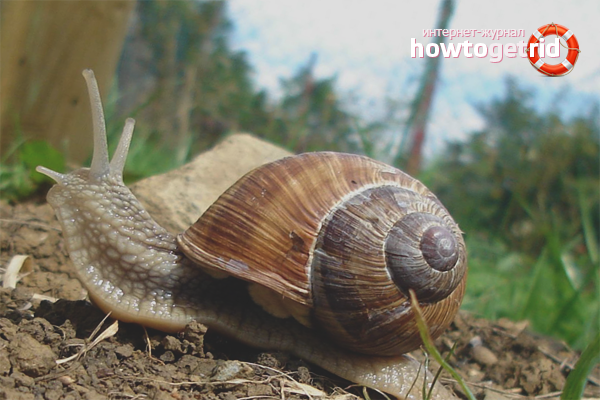
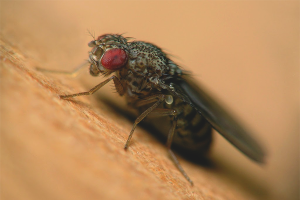
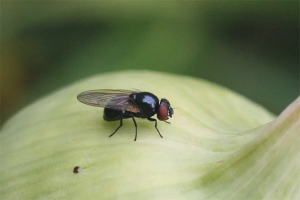
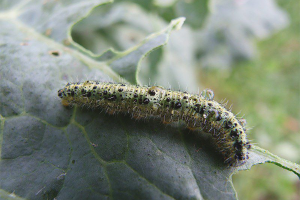
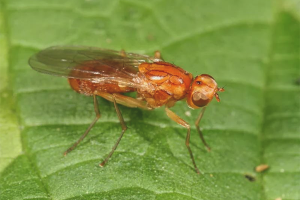
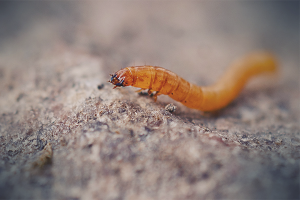
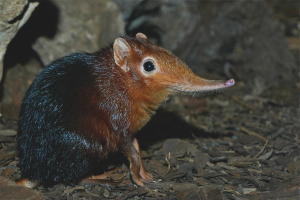
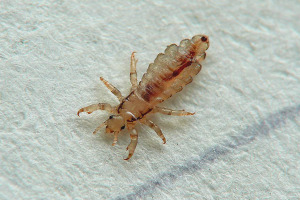
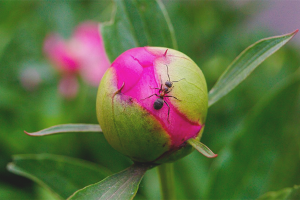
Submit